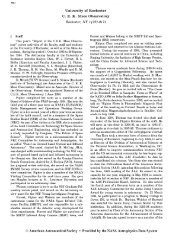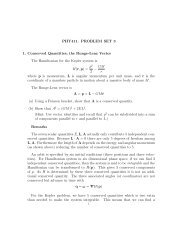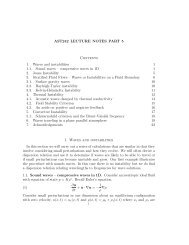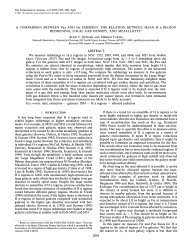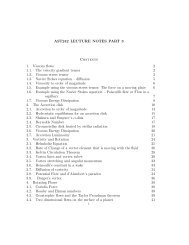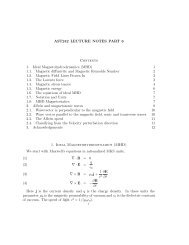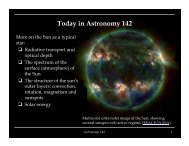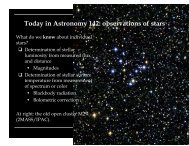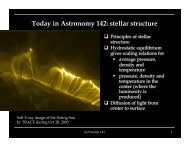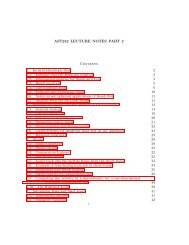Today in Astronomy 142: the Milky Way - Astro Pas Rochester
Today in Astronomy 142: the Milky Way - Astro Pas Rochester
Today in Astronomy 142: the Milky Way - Astro Pas Rochester
- No tags were found...
You also want an ePaper? Increase the reach of your titles
YUMPU automatically turns print PDFs into web optimized ePapers that Google loves.
Dark matter I: <strong>the</strong> Galactic disk <strong>in</strong> <strong>the</strong> solarneighborhoodWhen this procedure was first applied to observations by Oort<strong>in</strong> <strong>the</strong> late 1940s, <strong>the</strong> result<strong>in</strong>g value of µ was greater than thatof visible stars and <strong>in</strong>terstellar gas <strong>in</strong> <strong>the</strong> Solar neighborhood bya factor of about 2.! Miss<strong>in</strong>g mass, or dark matter: mass that emits no light butcan be detected by its gravity?S<strong>in</strong>ce <strong>the</strong>n,! Better (less biased) samples of stars have led to smallerestimates of <strong>the</strong> total µ.! The discovery of neutral atomic and molecular gas <strong>in</strong> <strong>the</strong>ISM has <strong>in</strong>creased <strong>the</strong> “lum<strong>in</strong>ous” mass a bit.! Better count<strong>in</strong>g of <strong>the</strong> numbers of brown and white dwarfs! Now <strong>the</strong> lum<strong>in</strong>ous and gravitat<strong>in</strong>g µ nearly match.<strong><strong>Astro</strong>nomy</strong> <strong>142</strong> 17




